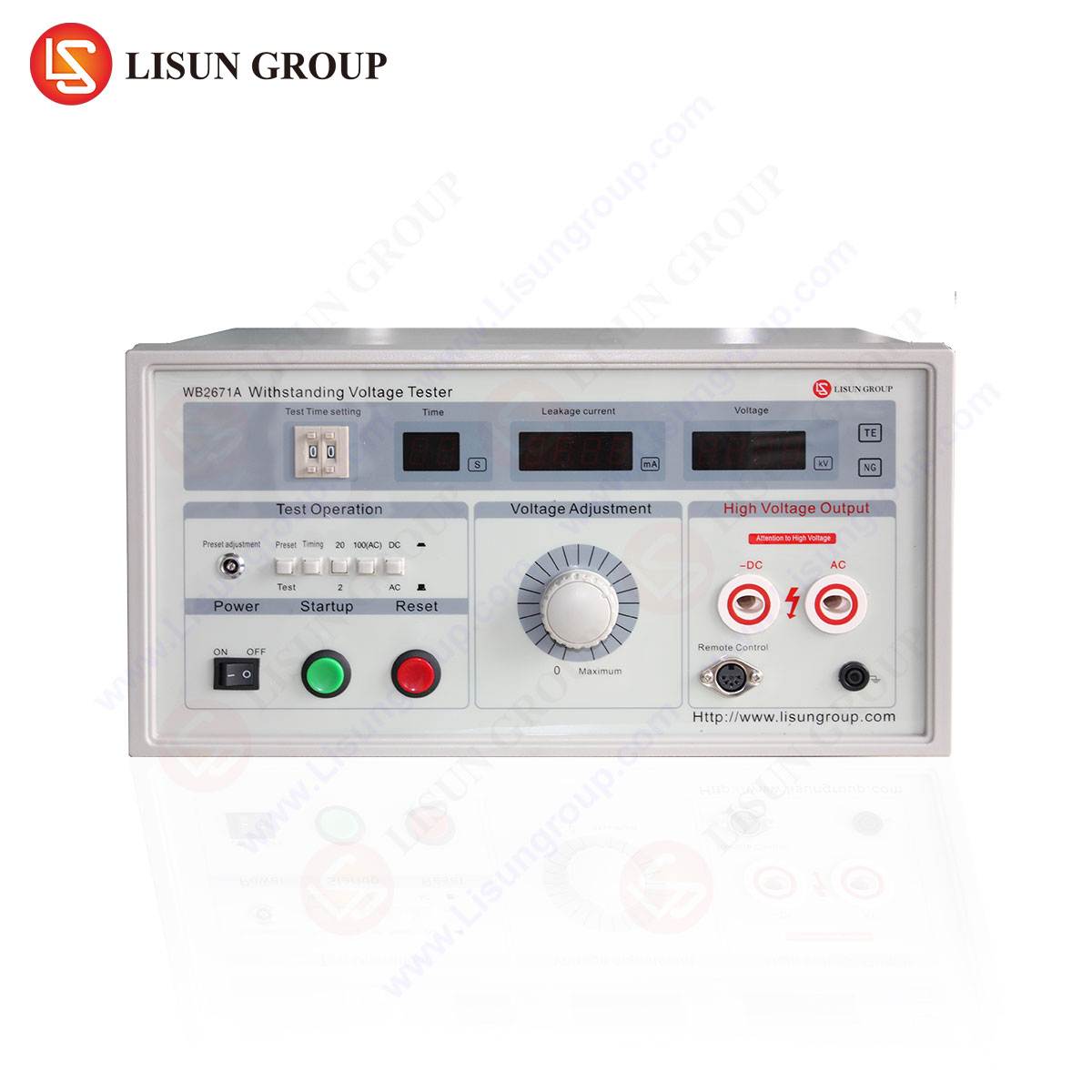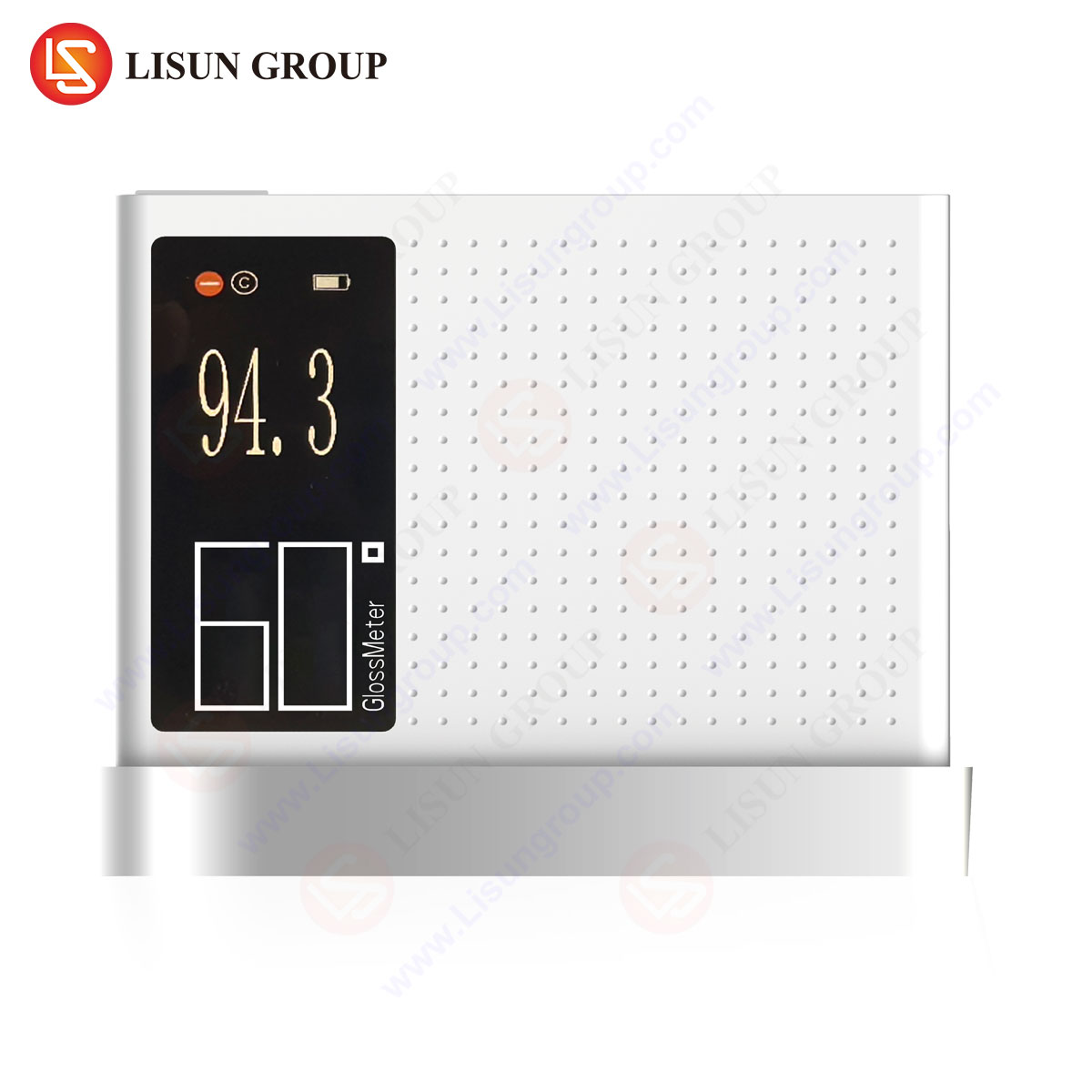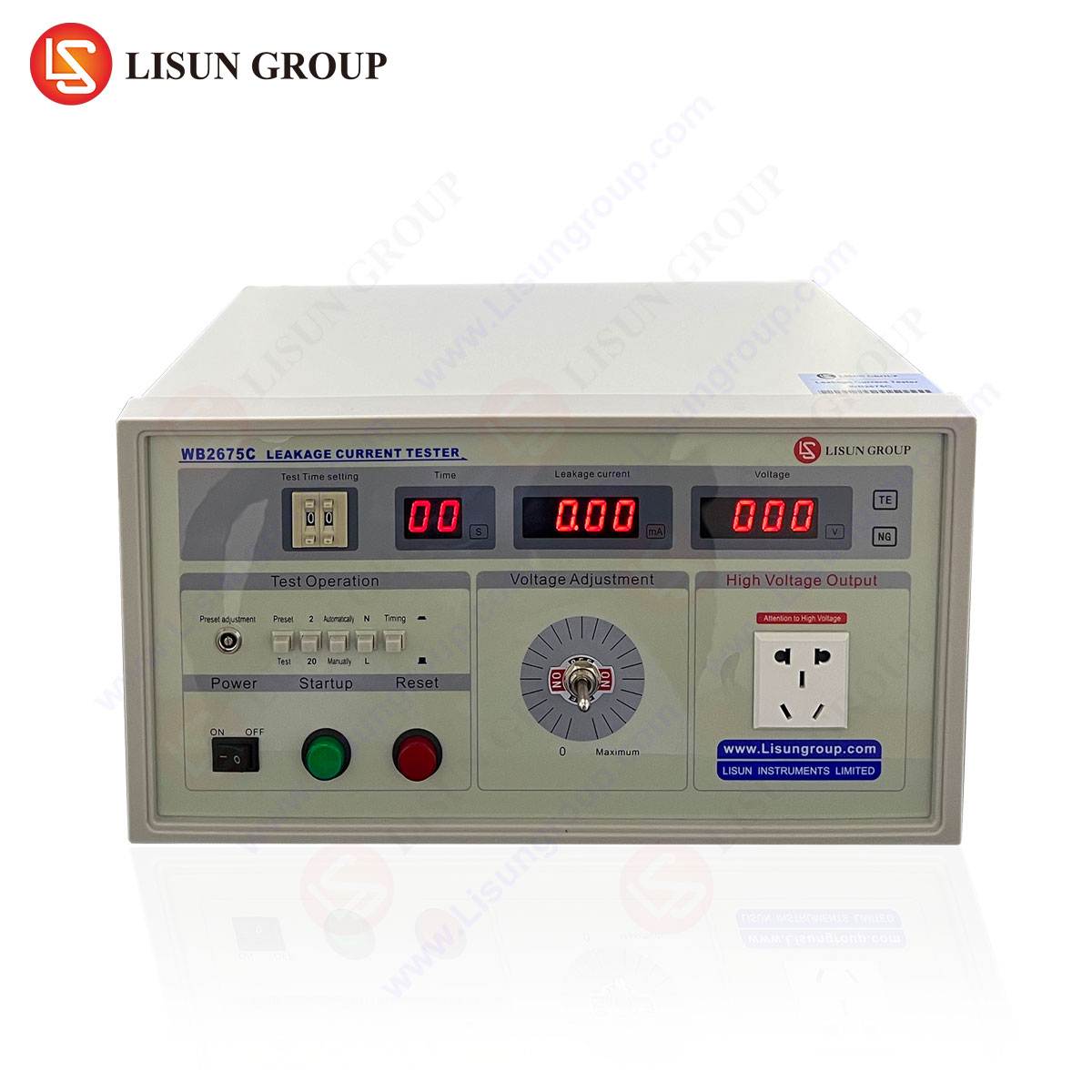Principles of Insulation Resistance Measurement and Its Role in Preventive Maintenance
Insulation resistance (IR) testing is a fundamental non-destructive electrical diagnostic procedure employed to assess the integrity of dielectric materials within electrical systems and components. The primary objective is to quantify the electrical resistance offered by insulation, which separates conductive parts. A high resistance value indicates robust insulation health, capable of preventing leakage currents and mitigating risks of electrical shock, short circuits, equipment failure, and fire hazards. Conversely, a declining or low IR value is a prescient indicator of insulation degradation, often resulting from environmental factors such as moisture ingress, contamination, thermal aging, or mechanical damage. Regular IR testing forms the cornerstone of any predictive maintenance program, enabling the early identification of potential faults before they escalate into catastrophic failures, thereby ensuring operational safety, reliability, and compliance with international standards like IEC 60335, IEC 61010, and ASTM D257.
The underlying principle of IR testing is the application of a constant, stabilized DC voltage—significantly higher than the operational voltage—across the insulation barrier. This voltage stresses the dielectric, causing a small, measurable current to flow. This current is comprised of three components: the capacitive charging current, which surges initially and then decays to zero; the absorption current, which decreases more slowly as the dielectric material polarizes; and the conduction or leakage current, which remains steady. The insulation resistance is calculated using Ohm’s Law (R = V / I), where V is the applied test voltage and I is the total measured leakage current after the transient capacitive and absorption currents have stabilized. Advanced testers perform timed ratio tests, such as the Dielectric Absorption Ratio (DAR) and Polarization Index (PI), which analyze the change in resistance over time to provide deeper insights into the condition of the insulation, particularly its moisture content and overall cleanliness.
Functional Overview of the WB2681A Penguji Resistensi Isolasi
Itu LISUN WB2681A represents a sophisticated class of insulation resistance testers, engineered to deliver precision, safety, and operational versatility for demanding industrial and laboratory environments. This instrument is designed to perform a comprehensive suite of tests, including insulation resistance, AC/DC voltage, resistance, and continuity. Its core functionality is centered on generating high DC test voltages to evaluate the dielectric strength of a wide array of components and systems.
Key specifications of the WB2681A include a wide insulation resistance measurement range from 0.01 MΩ to 1000 GΩ, ensuring applicability from low-impedance consumer electronics to high-voltage cable systems. It offers multiple selectable test voltages (50V, 100V, 250V, 500V, 1000V, 2500V, 5000V), allowing technicians to select a stress level appropriate for the equipment under test, adhering to the common practice of testing at twice the operational voltage plus 1000V for most equipment. The instrument features a high-resolution digital display for clear readout of resistance values, leakage current, and applied voltage. Safety is paramount; the WB2681A incorporates protections against over-voltage, over-current, and sudden discharge, and its outputs are designed to automatically discharge stored energy after a test is completed, safeguarding both the user and the equipment.
A competitive advantage of this model is its robust data handling capabilities. It can store a significant number of test results internally, which can be transferred to a computer via USB for further analysis and record-keeping, a critical feature for audit trails and trend analysis in preventive maintenance schedules. Its ruggedized design and clear interface make it suitable for use in varied conditions, from a controlled quality assurance lab on a medical device production line to a harsh environment assessing aerospace components.
Pre-Test Preparations and Safety Protocol
Prior to initiating any testing procedure, a rigorous safety protocol must be established and followed without exception. The high voltages generated by an insulation resistance tester present a severe electrocution hazard and can damage sensitive electronic components. The first step is to ensure complete de-energization of the circuit or equipment under test. This involves disconnecting it from all active power sources, locking out and tagging out (LOTO) the isolation points to prevent accidental re-energization. All capacitors within the system must be fully discharged and grounded. This is a non-negotiable step, as stored capacitive energy can be lethal and will also invalidate test readings.
The technician must then conduct a thorough visual inspection of the equipment, the test leads, and the probe connections. Look for signs of physical damage, corrosion, or contamination. Verify that the test leads and probes are rated for the intended test voltage. Using leads rated for 1000V on a 2500V test is extremely dangerous. Personal Protective Equipment (PPE), including insulated gloves, safety glasses, and arc-flash rated clothing as determined by a hazard risk assessment, must be worn.
The WB2681A itself should be inspected for any signs of damage and verified for calibration status. The test parameters—voltage level and test duration—must be selected based on the specifications of the equipment being tested and the relevant standard. For instance, testing a 240V industrial motor would typically call for a 1000V DC test, while testing low-voltage telecommunications equipment might only require 500V. Establishing a clear testing procedure document beforehand ensures consistency and safety across multiple tests and operators.
Executing Standard Insulation Resistance Tests
With preparations complete and safety measures in place, the testing procedure can commence. Connect the test leads to the WB2681A: the high-voltage (HV) lead and the return (GUARD) lead, if applicable. The guard terminal is used to eliminate the influence of surface leakage currents on the measurement, diverting them away from the main measurement circuit. This is particularly important when testing in humid or contaminated environments.
For a basic two-wire test, connect the HV lead to the conductor or terminal to be tested and the return lead to a reliable ground or the equipment frame. Ensure all other disconnected conductors are tied together and to ground, as the test is intended to measure resistance between the energized conductor and ground. Power on the WB2681A, select the ‘IR’ function, and choose the appropriate test voltage. Before pressing the ‘TEST’ button, ensure all personnel are clear of the equipment. Initiate the test.
The instrument will ramp up to the selected voltage and maintain it for the duration of the test. Observe the resistance value on the display. For a simple pass/fail assessment, a reading is often taken after 60 seconds (per many standards) and compared against a minimum acceptable threshold. For a 1000V test on motor windings, a common minimum acceptable value is 1 MΩ per 1000V of operating voltage, plus 1 MΩ. Therefore, a 1000V motor would require a minimum of 2 MΩ at 40°C. However, trending data over time is far more valuable than a single absolute value. A gradual decline in IR values indicates ongoing degradation.
Performing Advanced Timed Ratio Tests
For a more diagnostic analysis, particularly on larger electrical apparatus like transformers, generators, and long-run cables, timed ratio tests are indispensable. These tests are designed to negate the effects of temperature and equipment size, providing a normalized assessment of insulation quality.
The Polarization Index (PI) test is the most common. It is the ratio of the insulation resistance measured at 10 minutes to the resistance measured at 1 minute (PI = R₍₁₀₋ₘᵢₙ₎ / R₍₁₋ₘᵢₙ₎). Healthy, dry insulation will show an increasing resistance over time as the absorption current decays, resulting in a PI greater than 2.0. A PI between 1.0 and 2.0 suggests questionable insulation that requires investigation, while a value below 1.0 indicates severely degraded or wet insulation that poses an immediate risk.
The Dielectric Absorption Ratio (DAR) is a shorter-duration test, typically the ratio of a 60-second reading to a 30-second reading (DAR = R₍₆₀₋ₛₑ𝒸₎ / R₍₃₀₋ₛₑ𝒸₎). It serves a similar purpose but is less sensitive than the PI. The WB2681A automates these calculations, allowing the technician to simply initiate a timed test; the instrument will record the values at the appropriate intervals and compute and display the final ratio.
Interpretation of Test Results and Data Analysis
The raw megohm value obtained from an IR test is not a standalone indicator of health. Correct interpretation requires context: the type of equipment, its history, environmental conditions (especially temperature and humidity), and the test voltage applied. Results should always be compared against the manufacturer’s specifications, industry standards, and, most importantly, previous test records from the same asset.
A low insulation resistance reading can be caused by several factors:
- Moisture: The most common cause, which drastically reduces IR.
- Contamination: Dust, oil, salt, or other conductive pollutants on surfaces.
- Age: Thermal cycling and electrical stress causing brittleness and cracking.
- Physical Damage: Abrasion, crushing, or cutting of the insulation.
The value of the WB2681A’s data logging capability becomes evident here. By storing results and exporting them to maintenance management software, trends can be plotted. A steady, gradual decrease in IR value suggests normal aging. A sharp, sudden drop is a clear red flag indicating a recent event, such as water ingress or a physical fault, requiring immediate corrective action.
Industry-Specific Application Protocols
The application of IR testing varies significantly across sectors, dictated by the criticality of the equipment and the governing standards.
Medical Devices: For patient-connected equipment, stringent tests per IEC 60601 are mandatory. The WB2681A’s ability to perform precise tests at lower voltages (e.g., 500V DC) is critical for ensuring the integrity of isolation barriers without damaging sensitive internal electronics.
Aerospace and Aviation Components: Wiring harnesses in aircraft are subject to extreme environmental conditions. IR testing is performed during manufacturing and maintenance to ensure no degradation has occurred from vibration, temperature fluctuations, or humidity. The 5000V range of the WB2681A is applicable for testing high-voltage systems in modern aircraft.
Automotive Electronics: With the rise of electric vehicles (EVs), testing HV cables, battery pack isolation, and motor windings is essential for safety. Production line testing of these components requires a reliable, fast, and safe tester like the WB2681A to verify insulation integrity before assembly.
Telecommunications Equipment: Central office and data center infrastructure operates on 48V DC power. IR testing of these battery-backed systems and their extensive cable plants is performed to prevent ground faults that can disrupt service. Testing is typically done at 250V or 500V DC.
Bagian FAQ
Q1: What is the primary purpose of the GUARD terminal on the WB2681A?
The GUARD terminal is used to bypass surface leakage currents that would otherwise flow through the instrument’s measurement circuit, causing inaccuracies. By connecting the guard to a point that shunts these surface currents to ground, the measurement reflects only the volume resistance through the insulation itself, providing a more accurate assessment of its true condition.
Q2: At what frequency should insulation resistance testing be performed?
The frequency is risk-based and depends on the criticality of the equipment, its operating environment, and its age. Critical assets in harsh environments (e.g., a pump motor in a wastewater plant) may be tested quarterly. General industrial equipment is often tested annually during scheduled shutdowns. New installations should be tested prior to commissioning to establish a baseline. Always follow the equipment manufacturer’s recommendations and the facility’s electrical safety program.
Q3: Can the WB2681A be used to test semiconductors or electronic components?
No. The high DC voltage used in IR testing can easily avalanche and destroy semiconductor junctions, diodes, transistors, and integrated circuits. These components must be electrically isolated or bypassed before testing any assembly in which they are incorporated. The tester is intended for passive dielectric materials like wire insulation, motor windings, and transformer insulation.
Q4: Why is temperature correction important when comparing historical IR data?
Insulation resistance has an inverse exponential relationship with temperature; resistance decreases as temperature increases. A reading taken on a hot summer day will be significantly lower than one taken on the same asset on a cold winter day. To accurately trend data over time, readings must be corrected to a standard reference temperature (typically 20°C or 40°C) using standardized correction factors. This allows for a true apples-to-apples comparison of the insulation’s condition.





